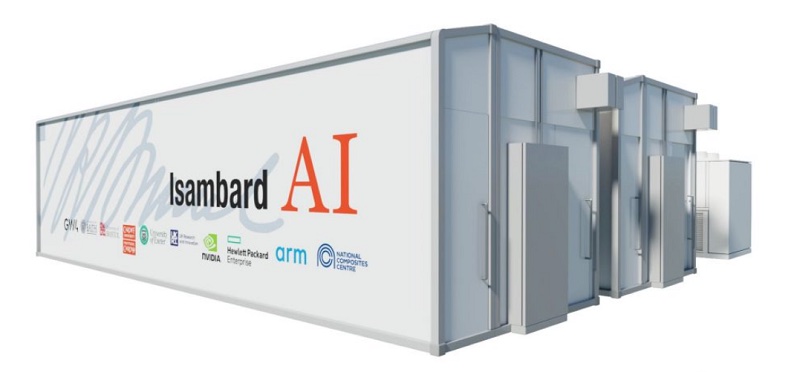Open-source player Airbyte, which provides data source to destination connector tech, has a “Powered by Airbyte” version that enables software developers to embed over 100 integrations into their applications. Airbyte’s library of connectors enables data movement and synchronization between various sources and destinations. Pricing for Powered by Airbyte is based primarily on the number of customers syncing data through Airbyte.
…
Kubernetes app protector CloudCasa by Catalogic says its CloudCasa backup-as-a-service platform is now available as a self-hosted option for enterprises and service providers. This new deployment option has all the features of the SaaS version and offers full control and enhanced sovereignty for enterprises with air-gapped clusters. It allows organizations to provide self-service backup and recovery to their developers with single sign-on authentication and granular role-based access control. The product will make its public debut at KubeCon + CloudNativeCon North America 2023, November 6-9 in Chicago. Also being introduced are single sign-on integration for enterprise SaaS customers and enhanced Velero onboarding and support services.
…
AWS Bedrock is a fully managed, serverless service that connects to a choice of foundation models from AI companies. With its general availability, Cloudera is releasing the latest applied ML prototype (AMP) built in Cloudera Machine Learning: CML Text Summarization AMP built using Amazon Bedrock. Via this AMP, customers can use foundation models available in Amazon Bedrock for text summarization of data managed both in Cloudera Public Cloud on AWS and Cloudera Private Cloud on-premise. Cloudera customers can fine-tune the Amazon Bedrock model using their own labelled data to create an accurate customized model for a specific problem.
…
DataStax, which supplies a scale-out, cloud-native Cassandra NoSQL database and an Astra DB Database-as-a-Service (DBaaS), this week announced the launch of RAGStack, designed to simplify implementation of retrieval augmented generation (RAG) applications built with LangChain. Its says that with RAGStack companies benefit from a pre-selected set of the best open-source software for implementing generative AI applications, providing developers with a ready-made solution for RAG that uses the LangChain ecosystem including LangServe, LangChain Templates and LangSmith, along with Apache Cassandra and the DataStax Astra DB vector database. This removes the hassle of having to assemble a bespoke solution and provides developers with a simplified, comprehensive generative AI stack.
…
Dell Technologies and Meta are enabling Meta’s Llama 2 AI large language model to run on Dell Generative AI systems on premises. Dell intends to be the preferred on-premises infrastructure provider for customers deploying Llama 2 with their own IT. Llama 2models can run in Dell-equipped data centers or edge sites. The Dell Validated Design for Generative AI with Meta’s Llama 2 provides pre-tested and proven Dell infrastructure, software and services, with fully documented deployment and configuration guidance. A blog can tell you more.
…
Europe’s largest fork lift and warehouse truck supplier KION Group is using Dremio’s lakehouse software, running on Azure, to get analytic insights from previously silo’d data sets. KION Group employees can now interrogate more than 200 million data records to receive responses to queries in just three seconds, compared to the 30 minutes the task would have taken previously. Dremio’s self-service analytics means that non-technical users, such as product owners or service leads, can run complex data queries without the assistance of IT professionals.
…
HPE has picked up a £225 million contract to build Isambard-AI, the UK’s fastest supercomputer at the University of Bristol. Isambard-AI will use next generation liquid-cooled HPE Cray EX supercomputers and 5,448 Nvidia GH200 Grace Hopper superchips, and is predicted to reach up to 200 quadrillion calculations per second, >200 petaFLOP/s and over 21 ExaFLOP/s of AI performance. This will enable Isambard-AI to perform over 21 quintillion AI-optimised floating point operations per second.

Phase one of the system, available in March 2024, will utilise Isambard 3 – a TOP500-class supercomputer service for AI and high-performance computing (HPC). This is due to be installed at the NCC at the start of 2024. Isambard-AI will use the latest HPE Slingshot 11 interconnect, and nearly 25 PB of Clusterstor E1000 Lustre storage optimised for AI workflows. It will be hosted in a self-cooled, self-contained data centre, using the HPE Performance Optimized Data Center (POD), and will be situated at the National Composites Centre (NCC), based at the Bristol and Bath Science Park. It will connect with a new supercomputer cluster at the University of Cambridge, called Dawn (see below), which is being developed to offer additional capacity as part of the new national AIRR (AI Research Resource).
…
…
Cloud object storage and data protection supplier IDrive is launching a free cloud data migration tool to enable users to transfer data from other object storage providers directly to IDrive e2 with no minimum data limits and no additional fees. Utilizing encryption protocols, IDrive e2 guarantees end-to-end protection for all transferred data. It says the cloud storage provides ransomware protection, object lock, bucket versioning, and centralized access. Data is stored in data centers with physical and biometric security, and all transfers are secured with TLS protocol. Pricing starts from $20/TB/Year with no fees for egress, and there is a $4/TB/month pay-as-you-go monthly option.
…
Intel and Dell will contribute to the Dawn supercomputer at the Cambridge Open Zettascale Lab for AI modelling work. Dawn will support some of the UK’s largest-ever workloads across both academic research and industrial domains. Importantly, it is the UK’s first step on the road to developing future Exascale system. IT will be rolled out in 2 phases, with phase operating now, and phase 2 completing in 2024. The liquid-cooled server HW consists of Dell PowerEdge XE9640s 2RU servers with dual gen 4 Xeon processors and four Intel Data Center GPU Max accelerators, with OpenStack SW. There will be more than 1,000 Intel GPUs, indicating at least 256 XE9640s. We have no details on the Dawn storage system.
…
Mahindra Racing, active in the Formula E champioship, selected Kinetica as its real-time database for advanced analytics for its speed and processing of location-enriched time-series data from sensors encompassing engine, aerodynamics, and tire performance. The faster they can process this data, run complex models, and identify critical issues, the quicker Mahindra Racing’s team can fine-tune their cars’ setups to try to win more races.
…
Reuters reports today that China’s Commerce Minister, Wang Wentao, has told Micron CEO and President Sanjay Mehrotra that it would welcom the company extending its footprint in China, indicating a thaw in the previous frigid relations. Wang said: “We welcome Micron Technology to continue to take root in the Chinese market and achieve better development under the premise of complying with Chinese laws and regulations.” China said it will optimize the environment for foreign investment and provide service guarantees for foreign enterprises. On October 9, Wang Wentao told a bi-partisan US delegation led by Senate Majority Leader Chuck Schumer, that China is ready to work together with the U.S. to adhere to the principle of mutual respect, peaceful co-existence and win-win cooperation, foster a business environment for Chinese and U.S. business communities and promote bilateral trade and investment. Micron would appear to be a benficiary of that. Extending its fotprint could mean Micron building or extending a memory fab in China.








